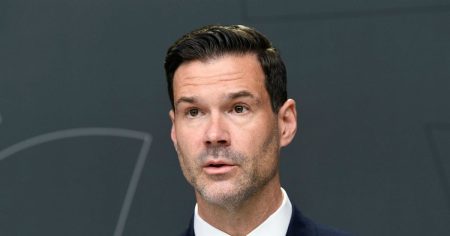The bustling emergency waiting room at Huddinge Hospital paints a vivid picture of the pressures facing Swedish healthcare. While only a dozen patients sit visibly waiting, the official count is much higher, with 43 individuals registered and the number expected to climb. Infectious diseases are the dominant reason for these urgent care visits, according to the doctors and nurses on duty. Mycoplasma and COVID-19 have been particularly prevalent, and the ever-present threat of seasonal influenza and norovirus looms large. Despite the high patient volume, the newly renovated facility offers a more comfortable environment, eliminating the need for patients to overflow into corridors.
The diverse patient population arriving at the emergency room includes a significant number of elderly and frail individuals, who are particularly vulnerable to complications from infections. These patients often require hospitalization, placing further strain on available geriatric care resources. Securing these necessary beds becomes a crucial logistical challenge for the hospital. Region Stockholm employs a system of regular communication between chief physicians and hospital directors to monitor and address these capacity issues. While the holiday season typically intensifies the demand for healthcare services, the situation during the recent Christmas period remained manageable, with adequate bed availability reported by regional chief physician Patrik Söderberg. However, the concurrent circulation of multiple respiratory viruses, including RSV, influenza, and COVID-19, along with norovirus, raises concerns. Public health officials continue to emphasize the importance of vaccination against both COVID-19 and seasonal influenza.
Other regions in Sweden are also experiencing an uptick in seasonal influenza cases. Region Skåne reports a similar trend, while in Gothenburg, at Sahlgrenska University Hospital, the holiday workload mirrored that of a typical weekend. Tobias Carlson, responsible for emergency care processes, described the situation as “strained but stable,” noting no significant increase in COVID-19 patients or other prevalent viral infections. The main concern for the upcoming New Year’s and Epiphany holidays, according to Carlson, is the possibility of icy conditions leading to accidents and increased emergency room visits. However, Gothenburg’s typically mild weather makes this less likely.
Back in Huddinge, the experienced staff at Karolinska University Hospital recounts the familiar pattern of increased pressure on emergency services during holidays and weekends, as primary care clinics reduce their hours or close altogether. Patients with less urgent medical needs are often directed to the emergency room, further contributing to the workload. The peak typically arrives during the Epiphany holiday, often resulting in chaotic scenes and patients stranded in the emergency room waiting for available beds. While the recent Christmas period was relatively manageable, with patients successfully transferred to appropriate wards, the staff remains prepared for the potential surge in demand, reflecting a constant state of vigilance.
The healthcare landscape described across these regions of Sweden highlights the complex interplay of factors influencing emergency room capacity. Seasonal variations in illness, coupled with the impact of holiday closures on primary care access, create predictable surges in demand. The ongoing circulation of multiple respiratory viruses further complicates the situation, underscoring the continued importance of vaccination. While hospital staff navigates these challenges with experience and resilience, the underlying pressure on resources remains a constant concern. The efficient coordination of care, the availability of beds, and the public’s adherence to preventative measures, such as vaccination, are crucial to maintaining a functional healthcare system during these demanding periods.
The recurring theme of a ”strained but stable” situation underscores the dedication and adaptability of healthcare professionals working under challenging circumstances. While innovative facility designs, like the new emergency room at Huddinge Hospital, can improve patient flow and comfort, the fundamental challenge of balancing limited resources with fluctuating demand persists. The ongoing monitoring of infection rates, the proactive communication between healthcare facilities, and the public health messaging emphasizing preventative measures are all essential components of a resilient healthcare system. The experiences shared by healthcare workers across Sweden offer valuable insights into the intricacies of managing emergency care during peak periods, and highlight the ongoing need for comprehensive strategies to address these recurring challenges.














